What Makes a Robust Microbiome?
Emerging research hints at ways to nurture and nourish the human microbiome.
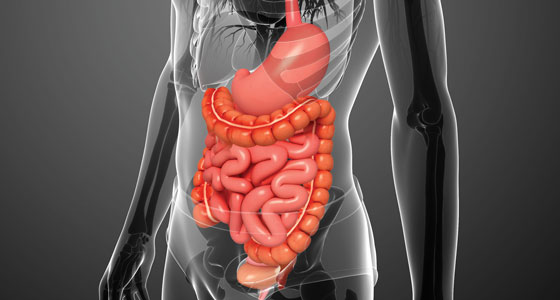
For many years, the scientific perception of microbes was largely antagonistic—and for good reason: Microorganisms produce pathogenic infections that severely compromise human health or precipitate death, and they cause food to spoil or otherwise render it unsafe for consumption. For these reasons, scientists have spent a great deal of time investigating tools and methods to disarm or kill microbes, and consumers have spent a great deal of money on hygiene products and antimicrobial agents to rid themselves of microscopic invaders. But recently there has been significant interest in sustaining and even empowering a very large collection of persistent microbes that have been colonizing humans for millennia: the human microbiome. Research on the human microbiome is still in its infancy, so very little information about it is definitively understood. But as details emerge, what has become clear is that the relationship between the microbiome and the human host is multifaceted and largely beneficial to human health. Finding ways to nurture and nourish the microbiome is thus imperative for it to function optimally, and emerging research offers clues on ways to accomplish this.
First, it is important to differentiate terms commonly used to describe the microbiome. From an ecological point of view, the human microbiome is an array of bacteria, viruses, fungi, archaea, and single-celled eukaryotes living in and on the human body. However, some researchers disagree with that connotation and refer to the communities of microbes inhabiting humans as microbiota. From their perspective, the human microbiome encompasses not only the vast array of microbiota but also all of the genes found in those microorganisms. While this may seem nitpicky, there is a reason for the distinction: The building block of all living things is a cell, and the human body consists of about 37 trillion cells that make up skin, blood, nerves, muscles, tissues, and organs that constitute the body’s structure. Nearly every cell in a person’s body has the same DNA and the same genes, but as cells grow or divide, the expression of those genes varies, which causes different tissues and organs to form. Cells and genes determine a person’s hereditary characteristics such as height, hair color, skin color, and even personality. And just as cells and genes determine a person’s hereditary characteristics, they also determine the communities of microorganisms that reside in and on the human body. Hence, each person’s microbiome is, at a minimum, as unique and diverse as each person’s genome. The human genome contains about 20,000 genes, but for every human gene, there may be as many as 300 microbial genes. Estimates of how many microorganisms live in and on humans vary, but the consensus is that it is a huge number: approximately 1013 or 100 trillion microbial cells—that’s three times more microbial cells than human cells. These microbial cells reside on the skin and in the respiratory, urogenital, and gastrointestinal tracts, and how humans acquire them is a fascinating journey.
 How the Human Microbiome Forms
How the Human Microbiome Forms
Long before the existence of plants and animals, microbes were earth’s only inhabitants, and they colonized every nook and cranny of the globe. When plants and animals came into existence, they provided new habitats for microbial colonization, so each animal and each plant has its own set of microbiota with which they share a symbiotic partnership. The symbiosis between humans and their microbiota begins for the most part at birth. As a baby travels through the birth canal, he or she is inoculated with a certain set of microbes: mainly those residing in the mother’s urogenital and intestinal tracts. A baby delivered by cesarean section obtains a different set of microbes: mainly those residing on human skin—and not necessarily the mother’s. The microbiota on human skin are not the same as the microbiota in the urogenital tract, and research suggests that the differences between the two may have profound effects on a child’s digestion, immune system, and perhaps long-term health (Neu and Rushing 2011, Ursell et al. 2012). Whether or not infants receive breast milk, another early microbe-rich exposure, also appears to have lasting impact on babies’ microbiome development and health. Studies indicate that infants born via cesarean section and formula-fed babies have increased risks for allergies, asthma, cardiovascular disease, obesity, immune deficiencies, leukemia, and inflammatory bowel disease (Mueller et al. 2015, Sevelsted et al. 2015).
After they are born, young infants acquire microbes mostly from breast milk or formula, family members, pets, and their immediate surrounding environment. Older babies and toddlers still acquire microbes mostly from family members, but microbiota from soil, water, external surfaces, and solid food also begin to populate their bodies. In babies and toddlers, food serves not only to provide microbes but also to nourish the microbes growing in the intestines, changing the environment of the gut microbiota. By the time children reach three years of age, their microbiota closely resemble those of adults, and by the time they are adults, each has a microbiome that is diverse and unique. In fact, the microbiota in an adult is the result of microbiota encountered at birth but also influences such as antibiotic use, stress, illnesses, intimate contact with others, and dietary intake. For this reason, no two human microbiomes are exactly alike. “While there may be common members, or even a core microbiota shared among individuals in a population, the gut microbiota is like a fingerprint: Everyone is different. Even twins or people with similar diets will have different microbiota,” says Robert Hutkins, a professor of food science at the University of Nebraska–Lincoln.
Human microbiota are not only interpersonally distinct but also intrapersonally diverse. Different sets of microbes grow best on different human sites: Some microbes survive best on skin while others are more adapted to the environment inside the nose, mouth, or genitalia. The environment in the human body that possesses the most dense and diverse microbial community is the gastrointestinal tract. Moreover, experts believe that intestinal microbiota may play the biggest role in maintaining human health, aiding in digestion, nutrient absorption, immune responses, and even brain function.
--- PAGE BREAK ---
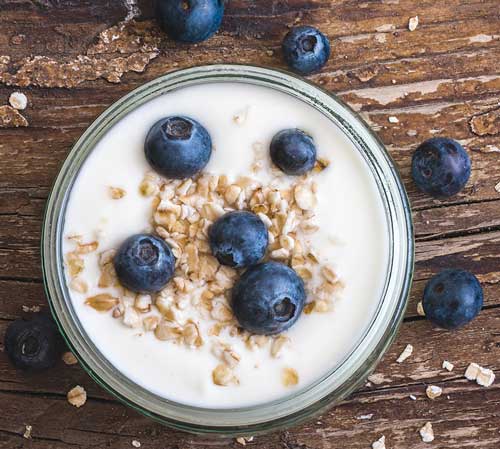 Diet and the Microbiome
Diet and the Microbiome
Research suggests that the gut microbiome is incredibly responsive to dietary intake as different foods sustain different microbiota. In fact, gut microbiota truly have a symbiotic relationship with the human body: They survive on the diets humans consume and, in doing so, feast on the parts of food that humans could not digest without them. In healthy normal individuals, most carbohydrates (85%), proteins (65%–95%), and fats are digested in the mouth, stomach, and small intestine. But some carbohydrates, such as resistant starch and cellulose, can be digested only in the colon (Krajmalnik-Brown et al. 2012). Gut microbiota, most of which are anaerobic, and their genes facilitate the fermentation of these molecules, creating substances (short-chain fatty acids) that feed good bacteria. In a sense, when a person eats, she is not eating just for herself but also for trillions of microbes. Her food choices matter as some foods promote the growth of microbes associated with good health while other foods promote the growth of microbes associated with poor health outcomes (Holscher et al. 2014). Dietary intake is thus the most powerful way to change the composition of gut microbiota and increase the activity of their genes. The diet that seems to be the most beneficial to health-promoting gut microbes is one that is rich in high-fiber foods such as vegetables, fruits, legumes, and whole grains. “Each of these food categories contain[s] dietary fiber, with each containing a unique fiber profile. Because fiber types differ depending on food source (soluble versus insoluble, viscous versus nonviscous, fermentable versus nonfermentable fibers), impacting the microbiota and host in unique ways, consumption from each category would be beneficial because it would provide a variety of natural dietary fibers,” says Kelly S. Swanson, a professor in the department of animal science and division of nutrition sciences at the University of Illinois at Urbana-Champaign. Fiber-rich foods that travel beyond the stomach and into the colon, where the majority of gut microbiota live, are incredibly beneficial to the gut microbiome. Such foods provide the fuel that good gut microbes need to flourish and function properly. While all plant foods contain fiber, certain plant foods are better for gut microbiota than others: foods that contain nondigestible fiber or prebiotics.
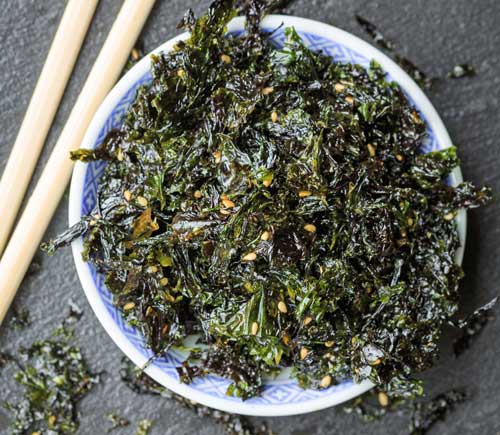 All prebiotics are fiber but not all fibrous foods are prebiotics. “Prebiotics are nondigestible food substances that beneficially alter the number and/or activity of gut microbiota, leading to improvements in host health. The criteria used to define prebiotics have changed lately, but most are nondigestible carbohydrates that are fermented in the colon,” explains Swanson. Performed by gut microbiota, colonic fermentation yields gases, such as methane and carbon dioxide, and short-chain fatty acids. The short-chain fatty acids lower the pH of the colon, transforming the gut into an inhospitable acidic environment for pathogenic bacteria (e.g., strains of Salmonella, Vibrio, and Helicobacter), fortifying the intestinal lining, and regulating immune responses (Conlon and Bird 2015, Park et al. 2015). Hutkins provides an effective analogy: “One can think of prebiotics and prebiotic fibers as ‘food for the grass and not the weeds.’” Without the fermentation of prebiotics, pathogenic bacteria in the colon could grow to outnumber beneficial intestinal microbes, causing intestinal dysbiosis. “Dysbiosis is an imbalance in the microbiota and is often observed in disease states, even though we often do not understand the cause. Although it is difficult to prove, maintaining gut health/preventing dysbiosis is one of the goals of consuming dietary fibers,” Swanson says. Intestinal dysbiosis is associated with increased risk of cardiovascular disease, colorectal cancer, inflammatory bowel disease, obesity, and type 2 diabetes.
All prebiotics are fiber but not all fibrous foods are prebiotics. “Prebiotics are nondigestible food substances that beneficially alter the number and/or activity of gut microbiota, leading to improvements in host health. The criteria used to define prebiotics have changed lately, but most are nondigestible carbohydrates that are fermented in the colon,” explains Swanson. Performed by gut microbiota, colonic fermentation yields gases, such as methane and carbon dioxide, and short-chain fatty acids. The short-chain fatty acids lower the pH of the colon, transforming the gut into an inhospitable acidic environment for pathogenic bacteria (e.g., strains of Salmonella, Vibrio, and Helicobacter), fortifying the intestinal lining, and regulating immune responses (Conlon and Bird 2015, Park et al. 2015). Hutkins provides an effective analogy: “One can think of prebiotics and prebiotic fibers as ‘food for the grass and not the weeds.’” Without the fermentation of prebiotics, pathogenic bacteria in the colon could grow to outnumber beneficial intestinal microbes, causing intestinal dysbiosis. “Dysbiosis is an imbalance in the microbiota and is often observed in disease states, even though we often do not understand the cause. Although it is difficult to prove, maintaining gut health/preventing dysbiosis is one of the goals of consuming dietary fibers,” Swanson says. Intestinal dysbiosis is associated with increased risk of cardiovascular disease, colorectal cancer, inflammatory bowel disease, obesity, and type 2 diabetes.
Some undigested dietary proteins are also fermented in the colon. However, whereas nondigested fiber that reaches the colon is perceived as mostly beneficial, the same is not true for indigestible proteins as they appear to promote the growth of pathogenic bacteria. How and why this happens is not well-researched in humans, but there are indications as to how this occurs: When a person consumes a diet high in protein, some dietary proteins are easily digested while others are not. Those that have low digestibility reach the colon in a fermentable state. Protein fermenting in the colon produces some end-products that are beneficial—such as nitrogen, which aids gut microbiota’s digestion of indigestible carbohydrates, and branched-chain fatty acids—and other compounds that are thought to contribute to the development of colorectal cancer (Conlon and Bird 2015). “It is worth noting that while low-carb, high-protein diets might be effective for weight control, they may not be so good for the gut microbiota,” Hutkins observes. Dietary fat may also have an effect on the composition of gut microbiota, but its influence is neither well-researched nor fully understood. “Bacteria do not use lipids for energy, but their presence can impact [microbial] activity and [have an] effect on the host too. Some are studying dietary lipid amount and/or type to determine what impacts that has on the microbiota,” Swanson says. Where there is more knowledge is in how gut microbiota aid in the metabolism of fat and other nutrients.
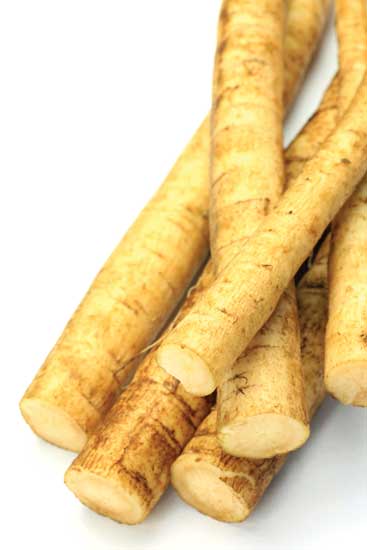 Gut Microbiota: The Microbiome’s MVPs
Gut Microbiota: The Microbiome’s MVPs
The gut microbiome is an integral part of the human genetic landscape and helps shape metabolism throughout life. In fact, the genes of intestinal microbes facilitate metabolic pathways that allow the digestion of certain compounds; human genes do not have this function (Ursell et al. 2012). Moreover, certain nutrients from dietary foods that are essential for human life, such as folate and vitamins B12 and K, can be manufactured only through gut-dwelling microbes. It has also been suggested that gut microbiota influence the tendency to store fat or burn it and stimulate low-grade inflammation, which would have implications in the management of obesity and other metabolic diseases. Early studies that compared the gut microbiota in lean subjects to those of obese subjects seemed full of promise. Studies of lean and obese mice seemed to suggest that an imbalanced proportion of two microbial groups were definitive in determining obesity (Ley et al. 2005, Turnbaugh et al. 2006). Additional studies on mice and humans seemed to confirm that a greater variety of a type of one bacteria phylum, Bacteroidetes, was present in the colons of lean individuals while obese individuals tended to have a greater variety of another phylum of bacteria, Firmicutes (Ley et al. 2006, Turnbaugh et al. 2008). Soon a general hypothesis emerged that preventing obesity may be as simple as altering the proportion of microbial phyla in the gut. But recent research dispels that theory by determining that no common microbial attribute exists in obese people that would make their intestinal microbiota distinct from that of healthy-weight individuals (John and Mullin 2016, Sze and Schloss 2016). “This is a controversial issue, with a lot of contradictory data in the literature. … I think the Bacteroidetes [to] Firmicutes ratio is not a good indicator because examining bacteria at the phyla level—[which] gives a [30,000]-foot view only—is too general,” Swanson asserts. “Specific information down at the genus, species, and strain levels [is] needed to truly understand what bacteria are present and what role they may have on energy harvest in the gut (digestion and fermentation of food), host appetite, host metabolism, energy balance, and other physiological effects.”
The new research also underscores that the microbiome of each human is distinct and not subject to a one-pattern-fits-all analysis/conclusion of which microbes comprise healthy gut microbiota, casting doubt on the ability of a strain of bacteria (i.e., probiotics) or specialized fiber to alter microbial profiles to induce health. “It has been widely known for decades that high-fiber diets lead to weight loss, decreased blood lipids, etc. that are beneficial to human health. While some of this is likely due to reduced caloric intake, much of it is probably due to the positive effects of [short-chain fatty acids]. Therefore, while gut microbiota certainly are involved in energy harvest and may contribute to obesity and co-morbidities in some ways, conditions that maximize [short-chain fatty acid] production are actually the ones that are most beneficial to the host (those with fiber inclusion),” Swanson concludes. “The gut microbiota definitely impact how much energy is extracted from our diet and how that may impact our metabolism, but I don’t consider the microbiota as the driving factor for obesity. Rather, I think the gut microbiota respond to what and how much we consume and how we treat our [bodies].” At this point, research that indicates dietary changes alter the composition of gut microbiota is likely conclusive, but further research on humans is needed to determine whether and how the composition of gut microbiota affects caloric intake, fat storage, and obesity.
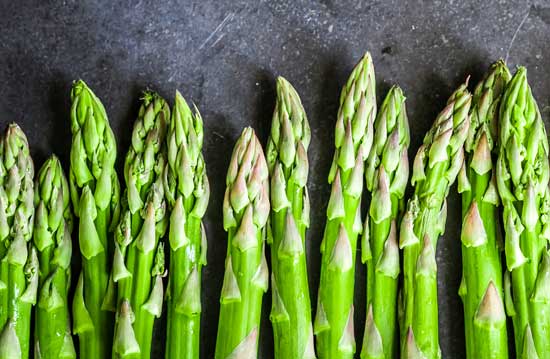 While scientists cannot pinpoint what constitutes a healthy balanced gut microbiome or whether imbalanced gut microbiota cause obesity, they are certain that there is an association between intestinal dysbiosis and gastrointestinal diseases. For example, research indicates that individuals with inflammatory bowel diseases have certain markers of intestinal dysbiosis (Parekh at al. 2015, Thaiss et al. 2016). In particular, too many or too little of certain microbes that are normal residents in the gut have been associated with various forms of inflammatory bowel disease. However, scientists have been unable to determine whether the presence of these microbes causes inflammatory bowel diseases or is the result of such diseases. “The chicken or the egg analogy applies: Although the gut microbiota may be involved, the initial trigger is not usually proven. For instance, microbes are often responding to their environment, so differences in the microbiota population may be due to an altered environment after a disease develops rather than being the cause,” Swanson observes. “Certainly, the gut microbiota have been shown to be different in terms of number and biological activity in diseased versus healthy populations. Whether it is due to direct interaction with the gut mucosal cell populations or … indirect communication through the many bioactive compounds the bacteria produce during fermentation in the gut, the bacteria can certainly impact gut and host health, including those of an inflammatory nature.” Nonetheless, inflammatory bowel diseases have been identified as models for understanding the interaction between gut microbiota and the immune system as the disease is caused by inflammation—an automatic response of the immune system. Besides gut microbiota, stress, infections, genetic factors, and even diet play roles in the manifestation of inflammatory bowel diseases. Interestingly, while scientists concur that high-fiber foods such as vegetables, fruits, legumes, and seeds are beneficial for “healthy” gut microbes, people diagnosed with inflammatory bowel diseases are advised to avoid such foods. However, some studies have suggested that probiotics may be helpful in the management of inflammatory bowel disease, obesity, and other manifestations of intestinal dysbiosis as well as the improvement of immune and digestive health.
While scientists cannot pinpoint what constitutes a healthy balanced gut microbiome or whether imbalanced gut microbiota cause obesity, they are certain that there is an association between intestinal dysbiosis and gastrointestinal diseases. For example, research indicates that individuals with inflammatory bowel diseases have certain markers of intestinal dysbiosis (Parekh at al. 2015, Thaiss et al. 2016). In particular, too many or too little of certain microbes that are normal residents in the gut have been associated with various forms of inflammatory bowel disease. However, scientists have been unable to determine whether the presence of these microbes causes inflammatory bowel diseases or is the result of such diseases. “The chicken or the egg analogy applies: Although the gut microbiota may be involved, the initial trigger is not usually proven. For instance, microbes are often responding to their environment, so differences in the microbiota population may be due to an altered environment after a disease develops rather than being the cause,” Swanson observes. “Certainly, the gut microbiota have been shown to be different in terms of number and biological activity in diseased versus healthy populations. Whether it is due to direct interaction with the gut mucosal cell populations or … indirect communication through the many bioactive compounds the bacteria produce during fermentation in the gut, the bacteria can certainly impact gut and host health, including those of an inflammatory nature.” Nonetheless, inflammatory bowel diseases have been identified as models for understanding the interaction between gut microbiota and the immune system as the disease is caused by inflammation—an automatic response of the immune system. Besides gut microbiota, stress, infections, genetic factors, and even diet play roles in the manifestation of inflammatory bowel diseases. Interestingly, while scientists concur that high-fiber foods such as vegetables, fruits, legumes, and seeds are beneficial for “healthy” gut microbes, people diagnosed with inflammatory bowel diseases are advised to avoid such foods. However, some studies have suggested that probiotics may be helpful in the management of inflammatory bowel disease, obesity, and other manifestations of intestinal dysbiosis as well as the improvement of immune and digestive health.
--- PAGE BREAK ---
Probiotics are live microorganisms that, when administered, populate the colon with good microbes that benefit the host. The idea that certain types of microbes confer health benefits has fueled the growth of the probiotics market. “[T]he efficacy of probiotic products is a bit controversial. The regulatory environment [for] such products is also dicey,” Swanson says. “Many believe that these products may be able to maintain gut health/prevent dysbiosis, but … the research is contradictory in nature—like most research dealing with microbiota right now.” In fact, recent research indicates that there is no conclusive evidence indicating that probiotics bestow therapeutic benefits to healthy humans (Kristensen et al. 2016). One of the reasons for this is that very few, if any, probiotics can survive the journey through the gastrointestinal tract: It is a harsh environment made up of digestive enzymes, bile salts, and hydrochloric acid that destroys many microorganisms—both pathogenic and beneficial. Another reason is that the microbiota of healthy humans differ greatly, so no one strain or strains can be touted as universally beneficial to every human’s intestinal microbial habitat. In other words, a bacterial strain that benefits one person may not be effective or beneficial in another person.
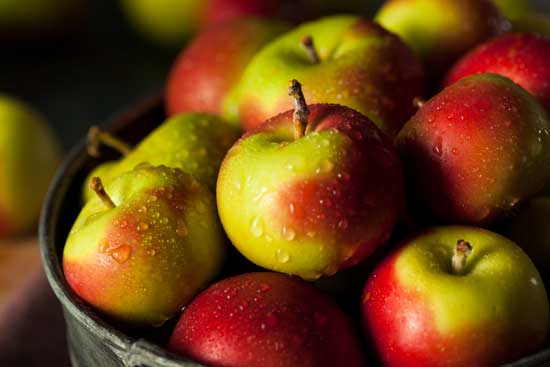 Though many studies suggest associations between the composition of gut microbiota and other complex diseases, the evidence to support these theories is very limited and most of it has been observed in mice. In addition, no one can be sure that the gut microbiome acts alone in the manifestation of disease; the microbiota in the mouth, skin, genitalia, and stomach may also play roles. According to the American Academy of Microbiology, “the microbes in these body sites are not simply passive bystanders but are playing active roles in the dynamic balance between health and disease” (Reid and Greene 2014). Still, gut microbiome research is intriguing and indicates that there are complex interactions between diet, intestinal microbiota, metabolism, inflammation, and disease. Around the world, government agencies, universities, and nonprofit research consortiums have committed significant resources to unraveling the mysteries of the human microbiome, and with such allocation of resources and knowledge, more conclusive data will emerge in the years to come.
Though many studies suggest associations between the composition of gut microbiota and other complex diseases, the evidence to support these theories is very limited and most of it has been observed in mice. In addition, no one can be sure that the gut microbiome acts alone in the manifestation of disease; the microbiota in the mouth, skin, genitalia, and stomach may also play roles. According to the American Academy of Microbiology, “the microbes in these body sites are not simply passive bystanders but are playing active roles in the dynamic balance between health and disease” (Reid and Greene 2014). Still, gut microbiome research is intriguing and indicates that there are complex interactions between diet, intestinal microbiota, metabolism, inflammation, and disease. Around the world, government agencies, universities, and nonprofit research consortiums have committed significant resources to unraveling the mysteries of the human microbiome, and with such allocation of resources and knowledge, more conclusive data will emerge in the years to come.
A Balancing Act in the GI Tract
A new dietary supplement designed to promote health by bringing the microbes in the gastrointestinal (GI) tract into better balance has moved closer to commercialization. New Orleans–based MicroBiome Therapeutics announced last month that it had received a notice of allowance for its patent application related to the microbiome modulator NM504.
“We designed NM504 to help correct the gut bacteria dysbiosis (imbalance) observed in some metabolic diseases, such as type 2 diabetes and prediabetes,” says Mark Heiman, vice-president of research and chief scientific officer of MicroBiome Therapeutics. Microbiome modulators are products formulated to affect the composition and activity of the gut bacteria, Heiman explains.
“The design of NM504 was predicated on the hypothesis that if we can restore proper bacteria flora and function in the large intestine, then we can restore signaling of satiety, improve regulation of blood glucose, and help restore a healthy mucosal lining,” Heiman continues. NM504 is made up of a blend of soluble and insoluble fibers and a proprietary polyphenol extract. “Each ingredient was selected for its availability in the large intestine and its role in nourishing and/or nurturing helpful microorganisms,” Heiman points out, “[and] goes well beyond prebiotics alone.”
NM504 will be formulated as a berry-flavored smoothie beverage, with a goal of rollout in the second quarter of 2017, according to Dale Pfost, CEO of MicroBiome Therapeutics. “We also have plans to formulate it as a ready-to-drink [beverage], a snack bar, and more,” says Pfost. It may also be used as an ingredient in other food products.
Heiman says that NM504 works in two ways. “[It] feeds or nourishes the helpful microorganisms in the large intestine and also nurtures their environment,” he explains. “This combination of functions promotes growth of beneficial bacteria and enhances their ability to outcompete potentially harmful bacteria. There is evidence that these ingredients also provide the conditions that promote bacteria’s ability to create metabolites that are healthful.”
The GI microbiome can be put out of balance by poor diet or the overuse of antibiotics, and Heiman says that NM504 may benefit those who need to restore or improve its function. The supplement will be promoted as a general aid to manage blood glucose and hunger and to enhance GI health, and the company’s current plans do not call for it to be targeted to individuals with a specific clinical disorder.
Toni Tarver is senior writer/editor of Food Technology magazine ([email protected]).
References
Conlon, M. A. and A. R. Bird. 2015. “The Impact of Diet and Lifestyle on Gut Microbiota and Human Health.” Nutrients 7(1): 17–44.
Holscher, H. D., J. G. Caporaso, S. Hooda, J. M. Brulc, G. C. Fahey Jr., and K. S. Swanson. 2015. “Fiber Supplementation Influences Phylogenetic Structure and Functional Capacity of the Human Intestinal Microbiome: Follow-Up of a Randomized Controlled Trial.” Am. J. Clin. Nutr. 101(1): 55–64.
John, G. K. and G. E. Mullin. 2016. “The Gut Microbiome and Obesity.” Curr. Oncol. Rep. 18(7): 45.
Krajmalnik-Brown, R., Z-E. Ilhan, D-W. Kang, and J. K. DiBaise. 2012. “Effects of Gut Microbes on Nutrient Absorption and Energy Regulation.” Nutr. Clin. Pract. 27(2): 201–214.
Kristensen, N. B., T. Bryrup, K. H. Allin, T. Nielsen, T. H. Hansen, and O. Pedersen. 2016. “Alterations in Fecal Microbiota Composition by Probiotic Supplementation in Healthy Adults: A Systematic Review of Randomized Controlled Trials.” Genome Medicine 8:52. doi: 10.1186/s13073-016-0300-5.
Ley, R. E., F. Bäckhed, P. Turnbaugh, C. A. Lozupone, R. D. Knight, and J. I. Gordon. 2005. “Obesity Alters Gut Microbial Ecology.” Proc. Natl. Acad. Sci. USA 102(31): 11,070–11,075.
Ley, R. E., P. J. Turnbaugh, S. Klein, and J. I. Gordon. 2006. “Microbial Ecology: Human Gut Microbes Associate with Obesity.” Nature 444: 1022–1023.
Mueller, N. T., E. Bakacs, J. Combellick, Z. Grigoryan, and M. G. Dominquez-Bello. 2015. “The Infant Microbiome Development: Mom Matters.” Trends Mol. Med. 21(2): 109–117.
Neu, J. and J. Rushing. 2011. “Cesarean Versus Vaginal Delivery: Long-Term Infant Outcomes and the Hygiene Hypothesis,” Clin. Perinatol. 38(2): 321–331.
Parekh, P. J., L. A. Balart, and D. A. Johnson. 2015. “The Influence of the Gut Microbiome on Obesity, Metabolic Syndrome, and Gastrointestinal Disease.” Clin. Transl. Gastroenterol. 6: e91. doi: 10.1038/ctg.2015.16.
Park, J., M. Kim, S. G. Kang, et al. 2015. “Short Chain Fatty Acids Induce Both Effector and Regulatory T Cells by Suppression of Histone Deacetylases and Regulation of the mTOR-S6K Pathway.” Mucosal Immunol. 8(1): 80–93.
Reid, A. and S. Greene. 2013. “FAQ: Human Microbiome.” American Academy of Microbiology, Washington, D.C.
Sevelsted, A., J. Stokholm, K. Bønnelykke, and H. Bisgaard. 2015. “Cesarean Section and Chronic Immune Disorders.” Pediatrics 135(1): e92–e98. doi: 10.1542/peds.2014-0596.
Sze, M. A. and P. D. Schloss. 2016. “Looking for a Signal in the Noise: Revisiting Obesity and the Microbiome.” mBio 7(4): e01018-16. doi: 10.1128/mBio.01018-16.
Thaiss, C. A., N. Zmora, M. Levy, and E. Elinav. 2016. “The Microbiome and Innate Immunity.” Nature 535: 65–74.
Turnbaugh, P. J., R. E. Ley, M. A. Mahowald, V. Magrini, E. R. Mardis, and J. I. Gordon. 2006. “An Obesity-Associated Gut Microbiome with Increased Capacity for Energy Harvest.” Nature 444: 1027–1031.
Turnbaugh, P. J., F. Bäckhed, L. Fulton, and J. I. Gordon. 2008. “Marked Alterations in the Distal Gut Microbiome Linked to Diet-Induced Obesity.” Cell Host Microbe 3(4): 213–223.
Ursell, L. K., J. L. Metcalf, L. W. Parfrey, and R. Knight. 2012. “Defining the Human Microbiome.” Nutr. Rev. 70(Suppl1): S38–S44.
